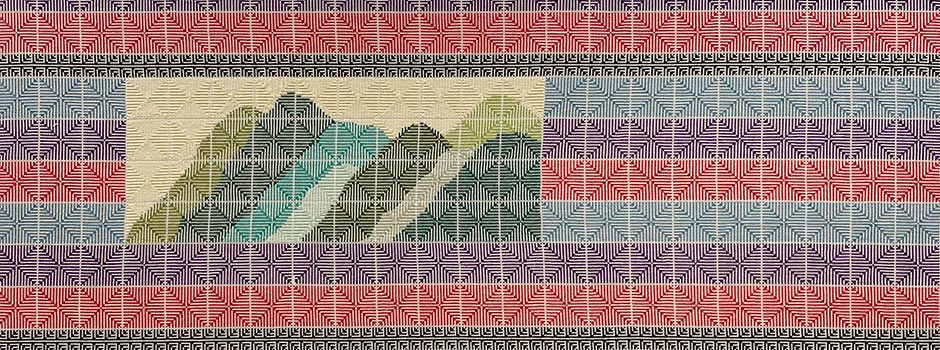
Art Dubai (11 - 13 March 2022) The Third Line at Art Dubai 2022
Mar 14, 2022 EVENT, Art Fair
Created from his imagination, Jordan Nassar's meticulously hand-stitched compositions of landscapes are versions of Palestine as they exist in the minds of the diaspora. Nassar explores the intersections of craft, ethnicity, and the embedded notions of heritage and homeland. Executed in collaboration with craftswomen living and working in Hebron - where embroidery skills have been passed down for generations - the women select the colours and stitch the pattern, after which Nassar fills in his landscape, creating a juxtaposition between local traditions of making with Nassar's western painterly aesthetic. He approaches traditional craft more as a medium than a topic. Such incongruous stylistic coexistence metaphorically embodies the contrast between what Nassar – who is of Palestinian descent but was born and raised in New York City – referred to as his 'Palestinian-ness' and his out-of-place feeling while in Palestine.
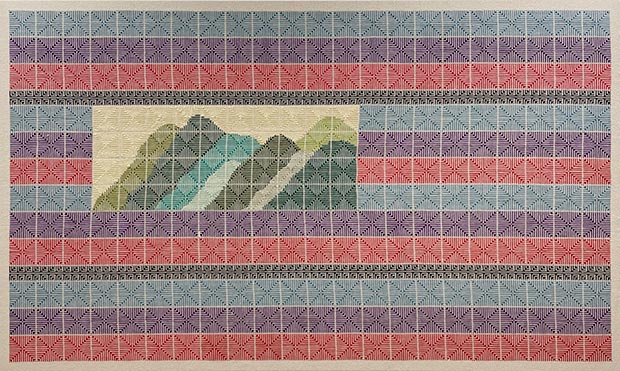 Jordan Nassar, In the halls of the sun, 2022. Hand embroidered cotton on cotton / Courtesy of The Third Line and the artist
Jordan Nassar, In the halls of the sun, 2022. Hand embroidered cotton on cotton / Courtesy of The Third Line and the artist
Adapting the sacred geometry of Islamic architecture with his essentialist aesthetic, Sahand Hesamiyan's sculptures utilise industrial materials he thoughtfully chooses to express poetic and spiritual ideas rooted in ancient Iranian culture. The sculptures on view are simultaneously enticing through their intricate designs while evoking an underlying sense of danger due to their shape and mediums, such as sharp steel. By reinterpreting elements of Iranian architecture and presenting them in a different context, Hesamiyan highlights the design and conceptuality of ideas that have been fundamental in the establishment of Islamic Art History.
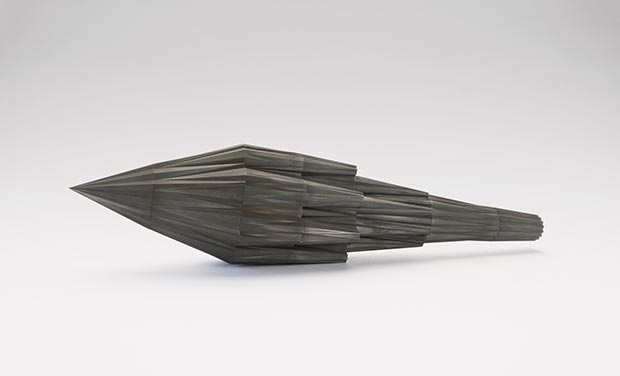 Sahand-Hesamiyan, Kanoon I, 2020, Steel. Edition of 3, 2AP / Courtesy of The Third Line and the artist
Sahand-Hesamiyan, Kanoon I, 2020, Steel. Edition of 3, 2AP / Courtesy of The Third Line and the artist
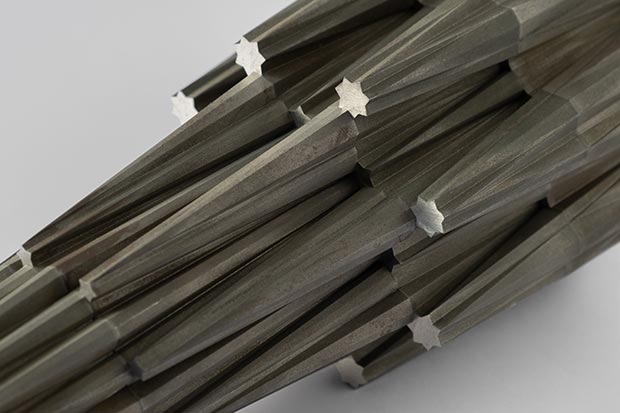 Sahand-Hesamiyan, Kanoon I, 2020, Steel. Edition of 3, detail / Courtesy of The Third Line and the artist
Sahand-Hesamiyan, Kanoon I, 2020, Steel. Edition of 3, detail / Courtesy of The Third Line and the artist
 Sahand-Hesamiyan, Kanoon I, 2020, Steel. Edition of 3, detail / Courtesy of The Third Line and the artist
Sahand-Hesamiyan, Kanoon I, 2020, Steel. Edition of 3, detail / Courtesy of The Third Line and the artist
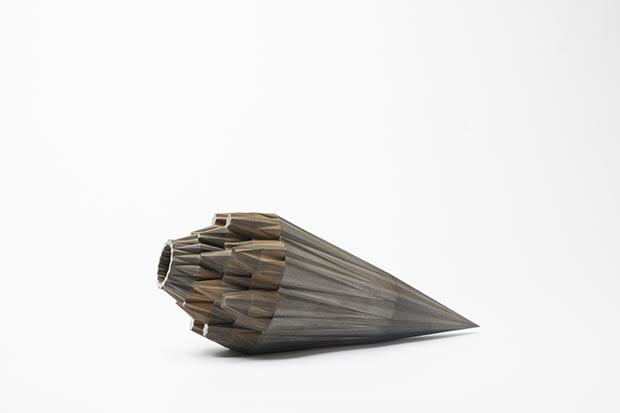 Sahand-Hesamiyan, Kanoon II, 2020, Steel. Edition of 3, 2AP / Courtesy of The Third Line and the artist
Sahand-Hesamiyan, Kanoon II, 2020, Steel. Edition of 3, 2AP / Courtesy of The Third Line and the artist
 Sahand-Hesamiyan, Kanoon II, 2020, Steel. Edition of 3, detail / Courtesy of The Third Line and the artist
Sahand-Hesamiyan, Kanoon II, 2020, Steel. Edition of 3, detail / Courtesy of The Third Line and the artist
Growing up in cinematic Cairo, Youssef Nabil draws inspiration from his childhood memories of black and white films filled with elegance and melodrama. Nabil's distinctive technique of hand-colouring silver gelatin prints removes the blemishes of reality and evokes a sense of longing and nostalgia, and allows his photographs to flicker between our time and another era. The search for sources of identity, the political and social concerns of the present and the melancholy of a time gone by are central to Nabil's artistic oeuvre. The presentation will include a selection of recent works in which Nabil has replaced the human figure that previously populated his works with abstract landscapes. Reflecting on Nabil's interrogation of life and existence, these intimate landscapes explore the artist's observations on the fragility of life.
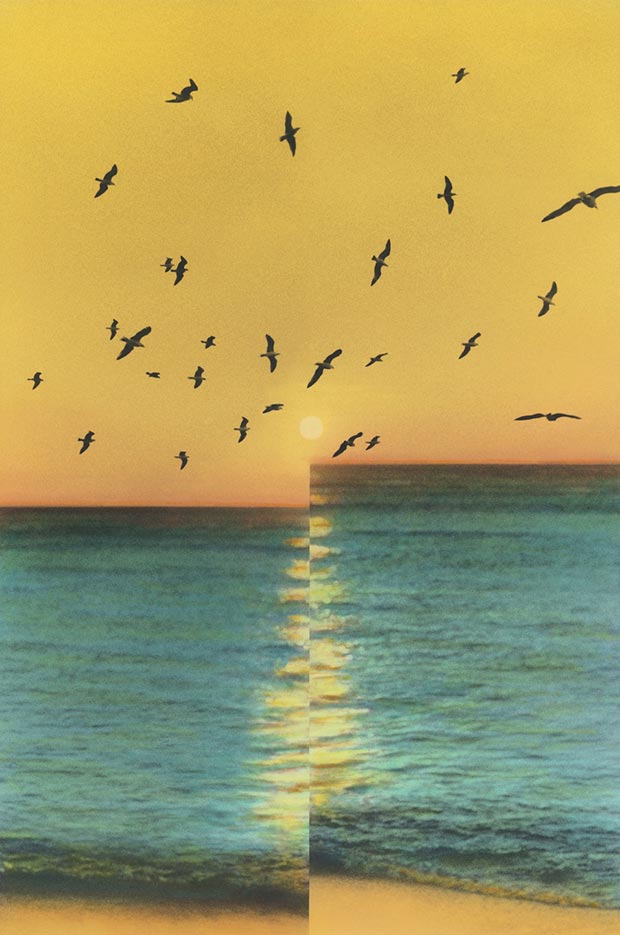 Youssef Nabil, No one knows but the Sky, 2019. Hand-coloured gelatin silver print. Edition of 5 / Courtesy of The Third Line and the artist
Youssef Nabil, No one knows but the Sky, 2019. Hand-coloured gelatin silver print. Edition of 5 / Courtesy of The Third Line and the artist
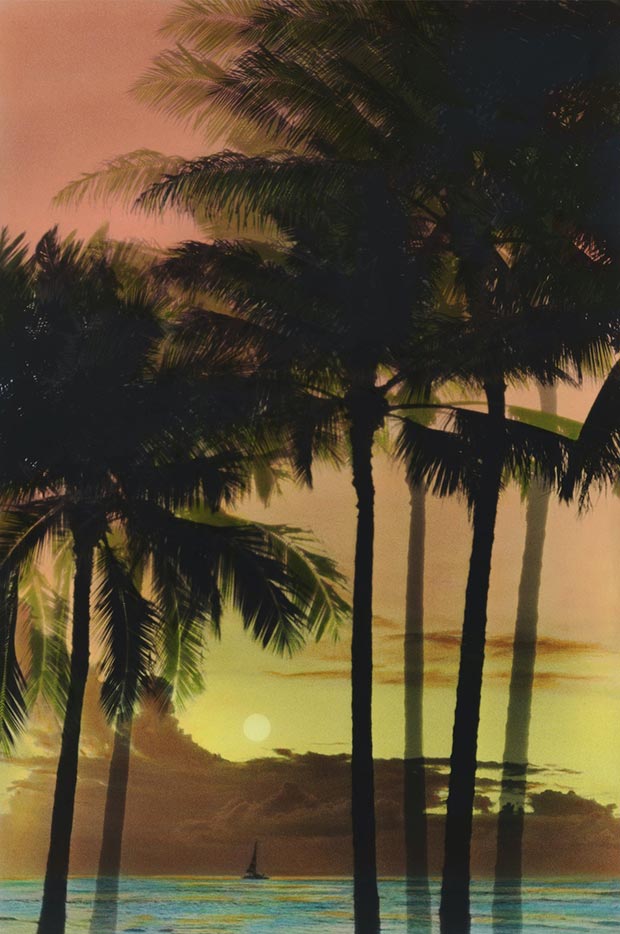 Youssef Nabil, Your Life was just a Dream, 2019. Hand-coloured gelatin silver print. Edition of 5 / Courtesy of The Third Line and the artist
Youssef Nabil, Your Life was just a Dream, 2019. Hand-coloured gelatin silver print. Edition of 5 / Courtesy of The Third Line and the artist
Amir H. Fallah's works are inspired by youthful memories, cultural traditions, and the Iranian-American experience. Through his paintings, Fallah deconstructs traditional notions of identity formation while simultaneously defying expectations of the genre of portraiture by removing or obscuring the central figure. Instead, Fallah incorporates a broader representation of their personhood through symbols and imagery, which examine how a person is defined by the cultural systems they hold. In addition, his paintings provide insight into cultural values, which are often passed between generations.
Huda Lutfi's artistic practice is closely aligned with her research, both of which reflect upon history and traditions as they exist in the contemporary world. In more recent years, Lutfi's work has taken a more self-reflexive and inward turn. Nevertheless, the human figure continues to be an essential part of her language; it often comes in the form of deconstructed Cairo mannequins, in repetition and as reflections of excess, waste, and the value of bodies in the urban context that engulfs her oeuvre. The presentation will include a selection of works that cross-examine the urban sprawl of Cairo through the lens of the artist. The layered visuals, marked with elements such as plastic mannequins juxtaposed against blue skies and archaeological cross-sections of the megalopolis, create surreal landscapes – suspending the idiosyncrasies and impossibilities of urbanity in unchartered space and time.
Founded in 2005, The Third Line is a Dubai-based gallery representing contemporary Middle Eastern artists locally, regionally, and internationally. A pioneering platform for established talent and emerging voices from the region and its diaspora, The Third Line has built a dynamic program that explores the diversity of practice in the region. In addition to its exhibitions, The Third Line engages in producing art publications in English and Arabic and hosts numerous non-profit, alternative programs that add to the discourse on art, film, music and literature in the region.
Represented artists include Abbas Akhavan, Ala Ebtekar, Amir H. Fallah, Anuar Khalifi, Farah Al Qasimi, Farhad Moshiri, Fouad Elkoury, Hassan Hajjaj, Hayv Kahraman, Huda Lutfi, Joana Hadjithomas & Khalil Joreige, Jordan Nassar, Laleh Khorramian, Lamya Gargash, Monir Shahroudy Farmanfarmaian, Nima Nabavi, Pouran Jinchi, Rana Begum, Sahand Hesamiyan, Sara Naim, Sherin Guirguis, Shirin Aliabadi, Slavs and Tatars, Sophia Al Maria, Tarek Al-Ghoussein, yasiin bey, Youssef Nabil and Zineb Sedira.
Comments
Add a comment
Commenting is not available in this section entry.